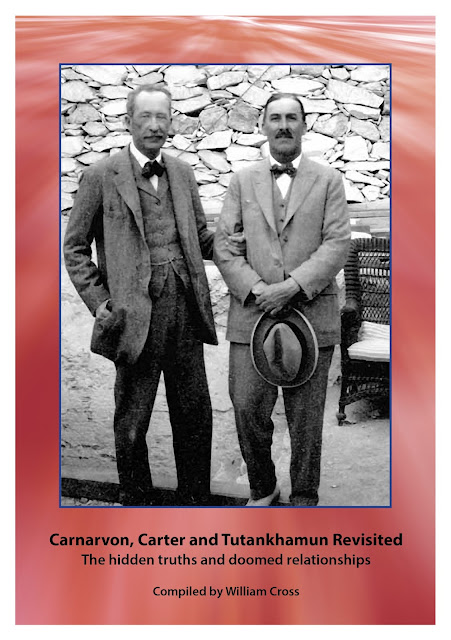Tutankhamun Centenary
Attempt at Carter’s Assassination
Part 1 ( of 5 )
Howard Carter’s
Reward for Ten Years Work in the Field
Howard Carter
By the 1900-1 season
in Egypt things had paid off for the 26-
year-old Howard Carter. His apprenticeship
comprising ten years successful service
in the field was rewarded with a government appointment as Inspector of
Monuments for Upper
Egypt and Nubia, based
at Luxor. He had impressed the
era’s leading Egyptian archeologists including the British veteran, William Finders Petrie, a man for whom
all new young excavators prized serving.
Carter also worked and pleased Edward Naville, a Swiss Egyptologist, someone with his own peculiarly rash digging style coupled with a thorny reputation for not suffering fools
gladly.
Gaston Maspero
Carter had also developed a special relationship with Gaston Maspero, the Director of the Egyptian
Antiquities Service; in 1904 Howard was further promoted to
the role of Chief Inspector
of Lower Egypt with
headquarters at Cairo.
Ancient Site at Sakkarah
Carter’s patch
included Sakkarah, an ancient necropolis
20 miles south of the capital. This
large grave
site is also sometimes
recorded as Saqqara, Saqqareh, Sakkara or Saccara. The necropolis includes the Serapeum, the tomb of the scared bulls,
a popular attraction still on the modern day as well as the past tourist circuit.
It is said the stepped pyramid at Sakkarah ( as featured above ) was a “ ladder to reach the sky”. An unusual
structure it is deemed to be one
of the earliest of Egypt’s clusters of 130 or so
Pyramids, built in the 3rd Dynasty period 2640
BC. Djoser ( Zoer) ( 26BC -2648 BC )
was the second ruler of the 3rd
Dynasty. Memphis, once the Capital city
of Egypt developed from Sakkarah. The
sick and afflicted as far away as Greece
and Rome visited one of the shrine at Sakkarah seeking a cure, much as modern
day pilgrims visit Lourdes in France.
Carter’s New
Status, Changes and Downfall
Howard Carter’s
role as Chief Inspector was second only to Maspero,
the Frenchman at the head of the
Antiquities department a man who rated Carter and became something of his
father like-figure. There were petty
jealousies and surprise in some circles at
Carter’s rapid rise.
The post of Chief Inspector was later split into two, Carter was
transferred to the Northern Inspectorate, and
James Quibell ( a man
a few years older than Carter,
and on paper much better qualified for an admin post ) was attached to the South.
James Quibell
Quibell was a quiet, intellectual figure, the author of a multi-volume series on the
‘Excavations at Saqqara’ and later the
Keeper of the Cairo Museum, and like
Carter one time a pupil of Flinders
Petrie, another of Carter’s admirers.
Despite all that
Carter had achieved barely within a year or two of his triumph
everything
came tumbling down to earth following a serious “incident” on 8 January 1905, that entire scene on closer examination may well have been contrived to stop Carter’s further
advance.
Extract from “
Carnarvon, Carter and Tutankhamun Revisited
The Hidden Truths and Doomed Relationships”
By William Cross, FSA
Scot
The book will be published on 4 November 2016
Next pieces of book blog to follow shortly.
Any queries, please contact the author William Cross by e-mail.
williecross@aol.com







No comments:
Post a Comment